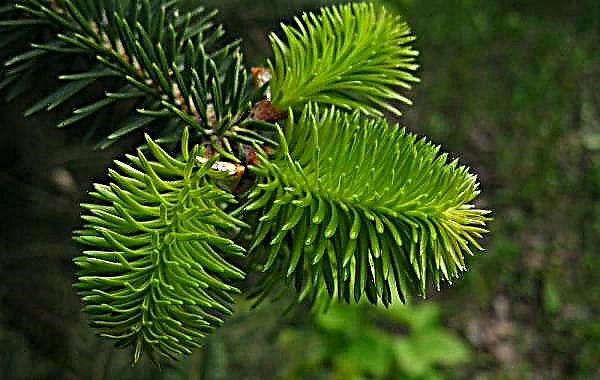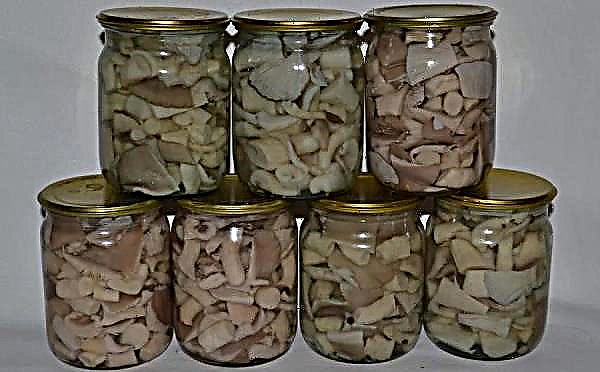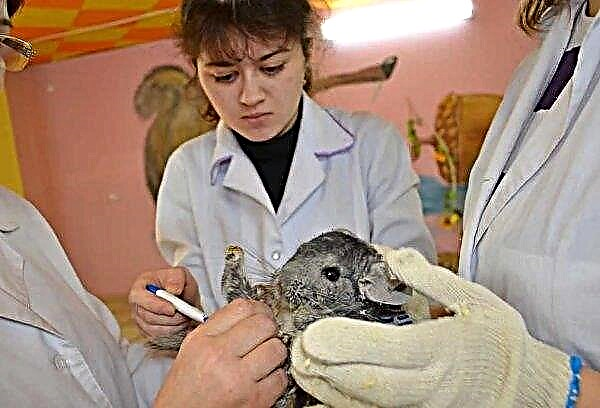Bees in the wild are able to independently cope with diseases and pests. But when keeping domestic bees in the hives, the beekeeper is obliged to help insects in the fight against pests. The article will give advice: what to do if a wax moth appears in the combs, how to deal with it and how to get rid of larvae.
Pest Description
Wax moth (shabby or bloodworm), the most widespread and bothersome pest of honey bees, belongs to the family of moths, a species of moth-shaped butterflies. There are large moths with a wingspan of 18-35 mm and small (less common) with a wingspan of 16-24 mm, the color is ash gray. The pest is found everywhere in the areas of developed beekeeping.
Important! Knowing at what temperature the pest dies, you can fight successfully: a wax moth dies at high (+ 45 ° С and above) and low (from 0 ° С and below) temperatures in any phase of development.
The life cycle of a pest development can be represented as follows:
- The eggs. An adult female in two weeks of life can lay up to 1,500 eggs per frame. White oval eggs 0.35 × 0.5 mm, development period 5-8 days. Of the eggs laid in early summer, adult insects develop by autumn, and eggs laid in the fall winter in the hives.
- Larva. Small larvae (1 mm) of white color are hatched from eggs. As it develops, the larva's body changes color to a darker one, and it grows into a caterpillar.
- Caterpillar. The length of the caterpillar of a small wax moth is 13-16 mm, large - up to 18 mm, with a brown head and 8 pairs of legs. The caterpillar development cycle is 30 days. For the development of each individual, 1.5 g of wax is necessary, so one caterpillar can destroy 500 or more cells, preferably from old dark honeycombs. Gnawing the walls, they entangle the cobwebs, which causes the death of bee brood. With a strong infection of the hive, cannibalism among the caterpillars is observed.
- Dolly. After a month, the caterpillars turn into brown pupae, burying themselves in nooks (crevices, cracks, folds, or gnawing holes). They pupate in cocoons arranged in groups. The pupae are 16 mm long and 14 mm male. In the pupal state, the insect spends 9-14 days.
- Butterfly. Adults (adults) of female butterflies live 7-12 days, male males - 10-26 days. Butterflies have underdeveloped oral cavities and the digestive tract, so insects do not feed in this phase of development. Wax moth flies from May to September, leading a nocturnal lifestyle.
- In one year, 2-5 generations of pests grow. Only eggs and moth pupae hibernate.

Caterpillars of a wax moth feed mainly on wax and cause significant damage:
- honeycombs;
- brood of bees;
- stocks of beef and honey;
- framework;
- insulation of beehives.
It is better not to store old and poorly built frames, but to melt the wax. The pest practically does not affect wax and light frames. Honeycombs damaged by moths become unsuitable for storing bee bread and honey; bees lose their places for brood. With its stool and waste, the moth makes the air in the hive unusable, and the bees leave the hive.
Did you know? Caterpillars of bloodworms can process plastic bags without damage to their life: in 6 hours, 50 caterpillars can eat 50 mg of plastic.
Strong bee families are able to cope with the invasion of the pest. Worker bees clean the cells, destroy the larvae, gnawing them from the damaged honeycombs, and adult insects are not allowed inside the hive. When a pupa is found, the bee seals it with propolis, and as a result, the pupa dies.
But in some cases, the help of a person is necessary, since with the onset of darkness, the flames become activated, and the bees stop fighting. Unlike bees, wasps do not produce wax. Recycled wood fibers or clay are the building material for honeycombs. For this reason, wax moths have nothing to eat in an aspen nest.

Signs of a wax moth
Closely observing the behavior of the bee family and the condition of the hives, you can notice the invasion of the wax moth in time:
- the flight of bees slows down, all the forces of the family go to fight against invaders;
- pests thrown out by bees are visible near the hives;
- there are bees with signs of a web on the body;
- the bees are grouped in the letch, but do not fly out;
- in the apiary there are moth butterflies;
- debris accumulates on the bottom, consisting of cobwebs, honeycomb particles, caterpillars and adult butterflies.
Did you know? It has been suggested that bee-flare enzymes can dissolve the wax-like shells of the tubercle bacillus and fight the Koch bacillus.
How to get rid of wax moth
Measures to combat wax moth and its larvae should be regular and comprehensive. At the first sign of infection in the hive and the storage it is necessary to carry out processing and further prevention, which consists in the use of such methods:
- physical;
- chemical;
- biological;
- folk;
- fumigation with sulfur;
- temperature condition;
- salt treatment;
- treatment with pairs of acids (acetic, formic).
Integrated pest management methods increase the effectiveness of measures.

Physical methods of struggle
The principle of physical control methods is to create uncomfortable conditions for the life of the pest - temperature and humidity:
- infected cells are shed with boiling water - the wax may sag and deform, in which case it should be melted;
- temperature + 45 ... + 80 ° С - dry heat treatment of beekeeping equipment for 1-4 hours;
- temperature -7 ... -15 ° С - freezing the frames for two days in the freezer. Frames with a feather are not subject to freezing;
- low humidity during storage of honeycombs (below 80%) - in a humid environment, pests start up faster.
Chemical methods of control
Chemical methods of control should be used carefully and according to the instructions.

It should be remembered that most drugs leave traces on honey and are also dangerous for bees, as well as for pests:
- “StopMol” (plates) - hang between the frames, when weathering, replace with new ones;
- gas treatment with bromide methyl (80 g / m³) or OKEBM (50 g / m³) during the day, with carbon dioxide (concentration 95-98.5%);
- cell disinfection - formalin (50 g), carbon disulfide (150 ml) or paradichlorobenzene (50 g) - used to kill eggs;
- spraying - “Biosafe” - a destructive agent for caterpillars (30 ml per frame);
- spraying - "Entobacterin" against moths, "Dendrobacillin", "Insectin", "Thuringin" - these drugs are harmful to the pest, but do not harm beneficial insects;
- "Ascomolin" - on top of the hives with frames (10 tablets per frame);
- “Paradichlorobenzene” - the drug is placed between honeycombs (150-200 g / m³);
- "Timol" - double treatment after 5-10 days by application to the upper slats (0.25 g per frame).
Important! When working with chemicals, it is necessary to use protective equipment (glasses, a dressing gown, gloves) to avoid contact with the skin and mucous membranes. Wash hands thoroughly after handling.
Folk ways against moths
Alternative methods may not be as effective as chemicals, but they are accessible to everyone and safe for honey bees. At the heart of folk remedies are the following methods of scaring away and killing pests.
The smell of plants
Moth does not tolerate odor:
- mint, lemon balm;
- hops and nut leaves;
- oregano;
- garlic
- wormwood;
- elderberries;
- immortelle;
- marigolds;
- thyme;
- branches of black root.

The joint use of these plants enhances the effect and leads to positive results. Grasses can be sown around hives, or dry mats can be spread in the storage box and along the hive. The fire-flame does not tolerate the smell of printing ink - fresh newspapers spread out along the hives can also serve as a way of struggle.
Salt
Honeycombs freed from honey must be dried and sprayed with a strong salt solution on both sides. After drying, sweep off the excess layer of salt. In salt-treated honeycombs, the mole does not start. In the spring, before installing in the hives, sprinkle the honeycomb with water. Such manipulations will provide the bee family with the necessary salt.
Vinegar
To disinfect and prevent infection, the honeycombs are installed in empty hives or polyethylene sleeves, which are tightly and tightly covered. Under the packaging is placed a container or rags soaked in vinegar essence (200 g, 70%). Under such conditions, they withstand at least three days, and after 10-12 days the procedure is repeated. Unfortunately, the essence evaporates over time, but this method does not destroy the eggs of the moth. Before installing in the hives, the cells are aired.
Formic acid
Treat the hive with honeycombs twice with acid (14 ml), covering for 3-4 days with a frequency of 10-12 days. In the apiary, when moth butterflies appear, traps can be made from honey water with the addition of bee bread and yeast. When flying at night, butterflies drown in traps and die. Bait set at night, and cleaned in the morning.
Video: wax moth fight
Ways to combat the emerging larvae of the fire
Upon the first detection of bee moth larvae in an apiary, it is urgent to take rescue measures, since the rapid spread of the pest will make the further fight harder and less successful. The silk web entangles the brood and it perishes.
The bees try to free the young ones themselves, but get entangled in the web and cannot fly. The complexity of the fight lies in the fact that the presence of bees in the hive eliminates many means of killing the pest, for example, chemical ones.
All that remains is the physical method of struggle to kill the larvae, with the hope that the bees will go to the liberated cells:
- frames with caterpillars and signs of a web are removed from the hive;
- pests are swept away from the framework;
- the framework is immersed in water for a day, then dried in the sun;
- a cleaned framework is desirable to add to the hives of strong families, which are able to independently fight the invasion.

If a nest of moths is found, the bees will have to be resettled in another hive on a new honeycomb with the addition of feed. The hive itself (bottom, corners, tray) is treated with blowtorch fire or a torch, trying to get into all the cracks.
Cells, depending on the degree of damage:
- destroy if the degree of damage is large;
- warm at + 50 ° C (for 2 hours);
- freeze at sub-zero temperatures, which leads to the death of larvae.
Preventative measures
In order to prevent infection with wax moth, the following recommendations should be followed:
- provide conditions for the creation of strong bee families;
- keep order and cleanliness in the hive, the storage and in the apiary;
- keep bee hives in a neat and healthy condition;
- maintain the temperature in the cell storage below + 10 ° C and provide good ventilation and dry air;
- fumigate the cell with sulfur (50 g per 1 m³) during the day, repeat the procedure after two weeks;
- the third part of the honeycombs annually replaced with newly rebuilt;
- place grooves of water around the hive to prevent the larvae from crawling between the hives;
- store wax in tightly closed containers;
- clean pallets when using tick catchers, burn garbage;
- it is advisable to pack the stored beekeeping material in transparent polyethylene in order to notice the appearance of a moth in time;
- damaged cells must be destroyed.
The best protection against wax moths is the prevention of infection. Timely detection of the pest and breeding of strong and persistent bee colonies that are able to independently control insect pests will effectively cope with a possible threat.Important! Sulfur treatment should not be carried out in the presence of honey in the combs, since sulfur compounds can cause harm to bees.












